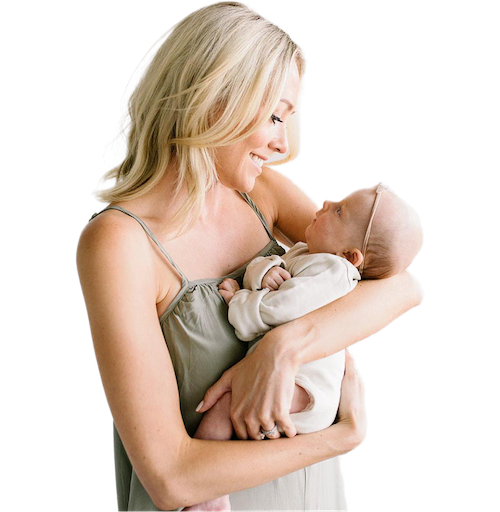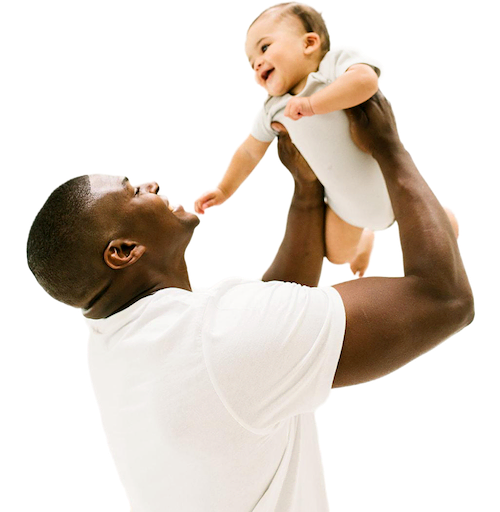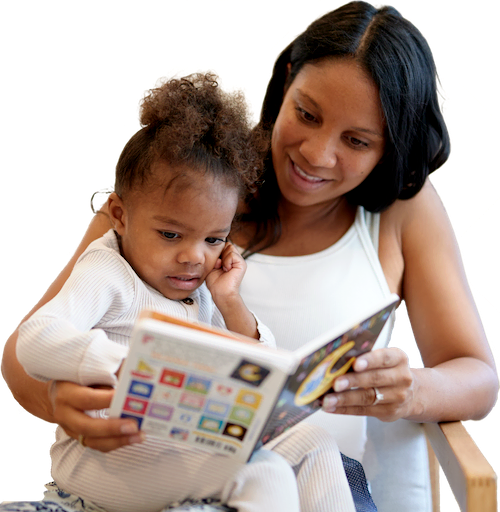How do you dress your baby for sleep? I know this can cause parents stress. Why? Well, we know that overheating a baby isn’t safe and that cold babies don’t sleep well. Let’s talk about how to dress your baby for sleep and how to know if they’re comfortable.
Note from Cara: Join the Taking Cara Babies community on Instagram for even more newborn, baby, and toddler sleep tips and resources!
What is the best temperature for baby sleep?anchor
You may see recommendations for room temperatures between 68℉ and 72℉ (20℃ - 22℃) for sleeping. Before you adjust your thermostat, I want you to consider this: We know that different homes have different temperatures. For example, I live in Arizona. In the summer, it’s not uncommon for our home to be around 78℉, but everyone in our family still feels comfortable. Likewise, even outside of the “recommended range,” babies can still be comfortable and safe as long as they’re dressed appropriately for that temperature.
What should my baby wear to sleep? anchor
First, you’re going to dress your baby for sleep based on the way you’re dressed.
Let’s think about how you are dressed for sleep. Are you wearing flannel pajamas under a heavy comforter? Dress your baby like you. Maybe you need to use fleece-footed pajamas and a sleep sack or swaddle.
Let’s say you’re wearing a t-shirt and a sheet when you go to bed. Dress your baby like you. Your baby might wear a onesie and a lightweight swaddle or sleep sack. If you’re comfortable, your baby is most likely comfortable too.
Then, use my mantra “assess, don’t obsess.”
What does that mean? Feel your baby’s core (their chest, neck, back, and tummy). Instead of using your baby’s hands or feet as indicators, feel their core. Does your baby’s core feel warm, but not sweaty? Not cold? Ok, you’ve nailed it!
Want to see this in action?
Expert Tip: It’s helpful to reassess how your little one is dressed for sleep when the seasons change. This helps ensure that they are comfortable and set up for the best sleep possible!
What are signs your baby is too hot while sleeping? anchor
Signs that your baby is too hot while sleeping are:
Your baby’s neck or hair are sweaty.
Your baby’s cheeks are flushed.
Your baby’s core (chest, neck, back, and tummy) feels clammy or sweaty.
Let’s say you assess, and your baby is a bit sweaty or their cheeks are flushed. They are probably too warm. If your baby is dressed too warmly, you can simply reduce the layers under their sleep sack/swaddle or opt for a sleep sack/swaddle with a lower TOG rating.
If your newborn runs warm but still needs a swaddle, here are a few options to keep your baby comfortable:
Try only a diaper under the swaddle.
Consider a product that has more airflow like the Embe swaddle (use code TCB10) or Anna and Eve swaddle strap.
What are the signs your baby is cold at night?anchor
If your baby is too cold at night, the core of their body (chest, neck, back, and tummy) would feel cool to the touch. It’s important to know that your baby’s fingers and toes are not a good indicator of warmth. Your baby could be dressed perfectly yet still have cooler fingers or toes.
So what do you do if your baby’s core feels cool to the touch? You’re going to add a layer. No, not by adding a blanket to the crib. Instead, consider using thicker jammies, a onesie under pajamas, or maybe switching to a sleep sack or swaddle with a higher TOG rating.
Keep in mind: We’re still going to follow all safe sleep guidelines. We aren’t adding blankets, hats, weighted sleep sacks or swaddles, or anything loose to the crib.
How many layers should a newborn wear?anchor
Right after you deliver, you might see your nurse add a layer to help keep your baby warm. In those first few days, babies are learning to regulate their temperature. Usually by the time they come home or in that first week, they’ve figured it out and your newborn can be dressed in the same way you are. But remember, after you dress your baby, think of my mantra “assess, don’t obsess.” And just so you know, the official recommendation of the American Academy of Pediatrics says that an infant should never be dressed in more than one additional layer than adults in the same environment.
If you have any questions or concerns about your baby’s layers or temperature, consider running it by your pediatrician.
Should newborns wear hats to sleep? anchor
No, according to the American Academy of Pediatrics(1), newborns should not wear hats to sleep or even indoors after the first few hours of life or in the NICU.
In those first few hours, babies are learning to regulate their temperature, so it’s possible you may see them wear a hat in the hospital. By the time your baby comes home, hats are no longer helpful in temperature regulation indoors.
Safety Tip: It’s important to know that any loose items or clothing (like hats, mittens, hair bows, pacifier clips, etc.) are not considered safe for sleep.
Are baby monitor temperatures accurate?anchor
In my experience, monitors can be unreliable or inaccurate in their temperature readings. If the monitor seems to indicate that the room is too warm or too cool, we aren’t going to stress. Instead, go into the room, notice the temperature yourself. Then, observe and assess your baby for signs that they’re too hot or too cold.
Will you watch this?
Safe sleep remindersanchor
As a mom, NICU nurse, wife of a pediatrician, and a sleep expert, safe sleep is always my priority.
A safe sleep environment is:
A separate sleeping space
Flat and firm
Free of loose bedding, clothing, or any other items (other than a pacifier)
Labeled as a “crib,” “bassinet,” “portable crib,” or “play yard”
Your baby should always be:
Placed on their back for sleep
Transitioned out of the swaddle when you see signs of rolling
Dressed appropriately for the temperature of the room
Free of any loose clothing or accessories
References
1 Sources
American Academy of Pediatrics. (2022). Sleep-Related Infant Deaths: Updated 2022 Recommendations for Reducing Infant Deaths in the Sleep Environment
Keep in mind that the information and content on this blog is for informational purposes and should not be considered medical advice. If you have questions about your child, please reach out to your doctor.








